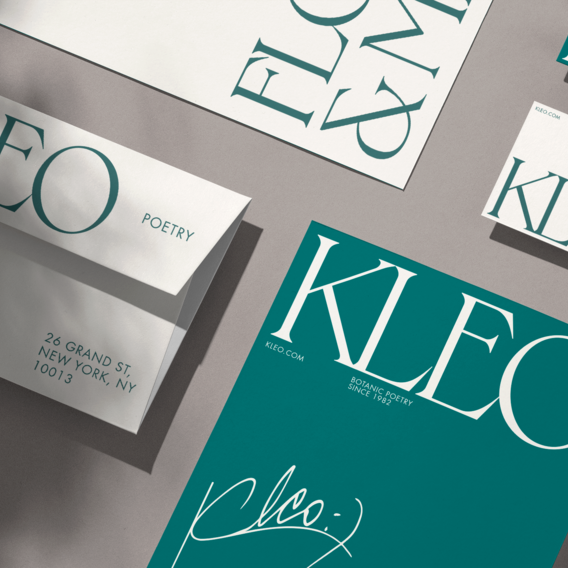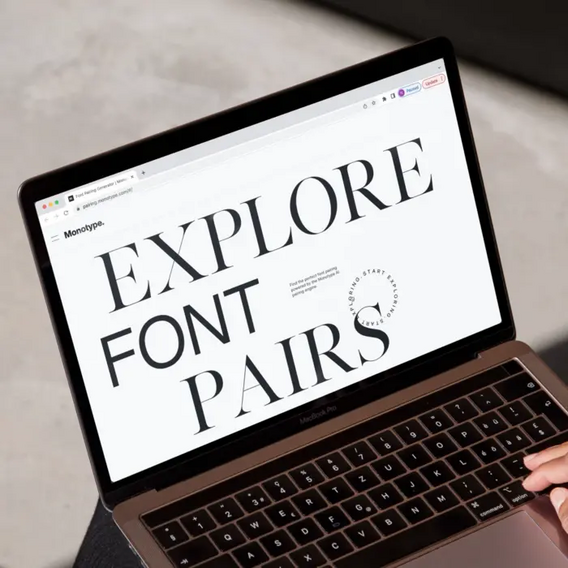Using Monotype Fonts to save and organize fonts for future inspiration.

Font management
Monotype Desktop App
Typography
Creative collaboration
Design
As a creative person, it’s likely that you find inspiration nearly everywhere in your daily life. Sure, that thrilling moment of realization can come from sources as lofty as nature or art. But it can also come from those as humble, unexpected, and even mundane as a billboard ad for milk — or perhaps the pattern created as you pour that milk into your morning coffee.
If you’re like many designers, you might collect these ideas as you encounter them, saving them in some form to return to later.
The Monotype Fonts Library is designed to facilitate that kind of font discovery. You might be browsing the library and saving fonts as options for a specific project, or you might come across a font that sparks inspiration for a completely different design. Either way, you’ll want to save compelling fonts for later without derailing your current task. And when you return to your favorite fonts, you’ll want them to be organized for easy access.
Monotype Fonts makes both of those tasks — saving fonts, and then organizing those saved fonts — simpler than ever. Here’s how.

Saving your favorite fonts for later.
The Monotype Fonts Library makes it easy to favorite fonts and font families without interrupting your browsing, by simply by clicking the heart symbol next to them( 🤍 ). Meanwhile, fonts that have already been favorited will have pink hearts( ❤️ ) next to them. These favorites are saved to your “Favorites” folder in “My Library” by default, but you can always move them to other lists later (we’ll explain how to do this in the next section).
Your favorited fonts will also appear in the Monotype Desktop App, making it especially convenient to activate and deactivate them in your design programs (with a click of the “Sync” button) so you can test them out in your projects.
Favorite font pairs.
In addition to favoriting fonts and font families, you can also save font pairs for future reference. Whether you discover them using Monotype Fonts’ advanced Font Pairing tool or through random browsing, it can be challenging to find font pairs that strike the exact notes you’re looking for — so it’s crucial to save them when you do discover them.
To get started, click on the pair icon and experiment with pairs as desired. Then, just like with individual fonts, click the heart icon to favorite a font pair. Head to the “Favorite Pairs” section of “My Library” to see the font pairs you’ve already favorited and organize them.
Check out our Help Center article on the subject for more detailed guidance on saving your favorite font pairs in Monotype Fonts.

Organizing your saved fonts.
Once you’ve saved at least a few fonts, font families, and/or font pairs, the next step is to begin organizing your collection. This will make it easier to return to the saved fonts during your future projects. Here are the main tools you can use to organize your favorite fonts in Monotype Fonts:
Font lists.
Lists are the primary font grouping tool in Monotype Fonts. Create personal font lists to curate your saved fonts by use case, general vibe, or any other category of your choice — whatever makes the most sense for how you think.
Create a new list by clicking the “Create new” button in the left sidebar and selecting “Font list.” Once created, your new font list will appear in the sidebar. Open the list to start adding your chosen fonts.
Shared font lists.
There are all kinds of reasons to share your font collections with colleagues — like when you’re all deciding among multiple typeface options for a shared project, or when you all need to access the final list of fonts to be used in your next creative pitch or magazine edition. Luckily, Monotype Fonts is built for exactly this kind of collaboration.
Make it easy for collaborators to access your fonts by adding fonts to lists under folders that have been shared with you, or creating a personal font list and sharing it. You can share font lists and folders by clicking the “share access” icon ( 👥 ). Keep in mind that not all users will be able to share font lists, but you can check the “Shared with me” section of “My Library” to see what others have shared with you.
Refer to this Help Center article for further guidance on the specifics of sharing font lists.

Folders.
You can organize your font lists even further by adding them to folders and subfolders. To create a folder, click the “Create new” button in the left sidebar and select “Folder.” Once your folder has been created, it’ll be visible in the sidebar and easy to access anytime.
Depending on your organizational style, you might want to create dozens of folders and subfolders for all your font lists, or you might opt to keep things relatively simple with just a few folders — use the method that works best for you.
We’ve found that grouping your fonts out by use case (like projects, products, titles, campaigns, etc.) encourages brand consistency and provides quick access to fonts currently in use.
Keep in mind that you can’t add fonts directly to folders, but you can add multiple font lists to each folder, and folders can also contain other folders.